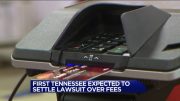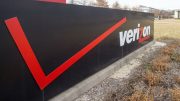Levi & Korsinsky LLP is a leading securities litigation firm. Back in May they announced their intent to file a class action against Apple. The law firm is now back with a four-count class action against Apple representing 13 individuals from various parts of the U.S. including Alaska, Arkansas, Delaware, Idaho, Montana, North Carolina, Pennsylvania, South Carolina, Tennessee, as well as two individuals from the UK and one from Japan. The case relates to the iPhone throttling issue which already has 60 or more class action suits ahead of it. Patently Apple stopped covering the matter at Class action 44. See the first 31 cases recorded in a list here.
The following segment titled “Substantive Allegations” is directly from the Class Action Complaint that was filed in the Northern District Court of California, San Jose Division yesterday, July 31, 2019. While no text was altered, all yellow highlighting was done by Patently Apple for simple emphasis.
“After years of customer frustration and attrition, on December 20, 2017, Apple admitted to one of the largest consumer frauds in history, affecting hundreds of millions of mobile devices across the globe. Prompting the admission were reports of unexplained shutdowns of certain Devices surfacing more than two years earlier, with consumers complaining their Devices were suddenly shutting down even though the batteries were more than 30% charged. Complaints accelerated in the autumn of 2016 and were accompanied by reports of unexplained heating.
Despite the growing chorus of complaints, Apple remained silent until November 2016, when it finally admitted a problem, but limited its admission to a small serial range of iPhone 6s Devices manufactured in September and October 2015 because the batteries were exposed to “ambient air” during assembly. Apple charged $79 in the United States to replace a battery at the time (and a similar price outside of the United States), but offered a free battery replacement to this small number of owners of Devices in the “limited serial range.”
Within days of Apple’s November 2016 announcement, it became clear that a far greater number of Devices were affected than Apple was letting on. Various media investigations revealed that the “bug” extended beyond the originally-identified iPhone 6s devices.
Then, 2017 arrived, and Apple installed software updates on the Devices to gather additional diagnostic data in early January 2017. Based in part on that diagnostic data, on January 23, 2017, Apple released a software update, known as iOS 10.2.1. Apple told consumers that the update was to fix “bugs’ or improve “security” on the Devices and a month later, Apple publicly disclosed that the software update had largely addressed the shutdown problem.
Missing from these statements to consumers or to the tech press was the true purpose of the software update—to conceal a much larger defect than the public knew—namely, there was a mismatch between the Devices’ hardware, including their processing chips and rechargeable lithium-ion batteries, and the ever-increasing demands placed on the Devices via Apple’s constantly-updating iOS software platform. This mismatch is referred to as the “Defect(s).” And the software update did not “fix” or “cure” the Defect—it instead concealed it by secretly throttling the Devices’ performance to reduce the number of unexpected shutdowns to a more manageable volume. Apple partially “cured” one defect by making another defect more aggressive—accomplished by violating federal computer fraud laws and a host of various state laws. For eleven months, the secret remained uncovered as Apple continued to hide the whole truth.
Apple’s throttling did not stop at iOS 10.2.1. On December 2, 2017, another set of throttling code was inserted in iOS 11.22, but Apple again told consumers the update was primarily to fix “bugs” and provide “improvements.” Apple did not reveal the Defects.
Only after independent research was published online in mid-December 2017, demonstrating the marked degradation of performance in a large sampling of the Devices after installation of the Updates, did Apple attempt to start to come clean. On December 20, 2017, Apple tacitly admitted that the Updates intentionally slowed the Devices (the “December 20 Admission”) stating, in relevant part:
“Our goal is to deliver the best experience for customers, which includes overall performance and prolonging the life of their devices. Lithium—ion batteries become less capable of supplying peak current demands when in cold conditions, have a low battery charge or as they age over time, which can result in the device unexpectedly shutting down to protect its electronic components.
Last year we released a feature for iPhone 6, iPhone 6s and iPhone SE to smooth out the instantaneous peaks only when needed to prevent the device from unexpectedly shutting down during these conditions. We’ve now extended that feature to iPhone 7, with iOS 11.2, and plan to add support for other products in the future.”
The December 20 Admission, however, contained the further misrepresentation that the code was designed to “smooth out” allegedly “[unexpected] instantaneous peaks” in performance. A downpour of media reports ensued, several of which used the more appropriate term—”throttled”—to define this “smooth[ing]” feature that Apple inserted into the code for the iOS 10.2.1 update.
The batteries have a limited number of charge and discharge cycles, and they degrade over time. The batteries give off current which is used to drive the processor (i.e. the chips) in each of the Devices to perform tasks (i.e. play video, open applications, transmit data, etc). The throttling via the Updates permitted Apple to have the batteries draw less current to run the Devices for the same amount of time as a new battery, but the trade-off was that the processing speed was slowed down.
This is akin to a driver going slower to get better gas mileage. Over time, the “gas tank” shrinks further as new and more demanding iOS updates are added, meaning even slower performance as the processor originally provided with the Devices struggle—not only due to their own limitations—but the limitations of the batteries to provide enough power current to keep pace with the new demands (the “Battery Issues”). Given the constant iOS upgrades requiring the processors in Apple’s Devices to perform more and more tasks, the batteries were inadequate for the Devices from day one, hence the Defects.
Worse yet, due to the Defects and Battery Issues, consumers would logically be required to continually recharge their Devices to attempt to refill the “gas tank” with more power. This constant recharging only feeds the further degradation of the battery.4 While Plaintiffs and the class need not attribute any motive behind Apple’s intentional degradation of the Devices, it is evident that Apple continued to do so for the simple reason most frauds are committed: money. Although technically complex in part, the scheme was logical and simple: The Devices were designed defectively, and Apple released software updates to conceal the Defects, all the while exacerbating the effects of the Defects—principally decreased performance—so that Device users had no choice but to purchase new batteries or upgrade their Devices, resulting in additional payments to Apple and a sustained (albeit forced) customer base.
Further highlighting Apple’s dependence on the “success” of its defective products, the Devices represented at least 70% of Apple’s overall revenue for at least fiscal years 2013 to 2017 (nearly $800 billion), and to date. Critically, in 2016—just prior to the first of the Updates—Apple was stumbling for the first time in 15 years in iPhone sales, was facing a saturated iPhone market, decreased sales of iPads (and even its Mac product line), the end or phasing out of third party vendor “two-year” service contracts, and increased competition overall.
As such, a perfect storm was brewing for Apple, with a host of problems threatening its continued ability to profit in the smartphone and tablet markets. No time, and particularly during 2016 and 2017, was a good time for Apple to reveal that its Devices were defective. And so, the sly saga progressed.
Through this confluence of events, consumers were defrauded into purchasing Devices with Defects and Battery Issues (because Apple never disclosed the problems), new batteries, and even new devices. Apple misrepresented material facts to consumers by representing each new device as faster with longer battery life, all the while omitting that any Defects or Battery Issues existed. Because Apple put profits over its consumers, and deliberately misrepresented facts to make more profits, its scheme was willful and wonton, and with reckless disregard for its customers—Plaintiff and the class members.”
The Four Counts against Apple
Count 1: VIOLATIONS OF THE COMPUTER FRAUD AND ABUSE ACT
Count 2: VIOLATIONS OF THE CALIFORNIA UNFAIR COMPETITION LAW,
Count 3: CALIFORNIA COMPUTER DATA ACCESS AND FRAUD ACT
Count 4: TRESPASS TO CHATTELS
Source: www.patentlyapple.com





Be the first to comment on "A New Class Action Has Been Filed Against Apple for ‘Secretly Throttling’ iPhones"